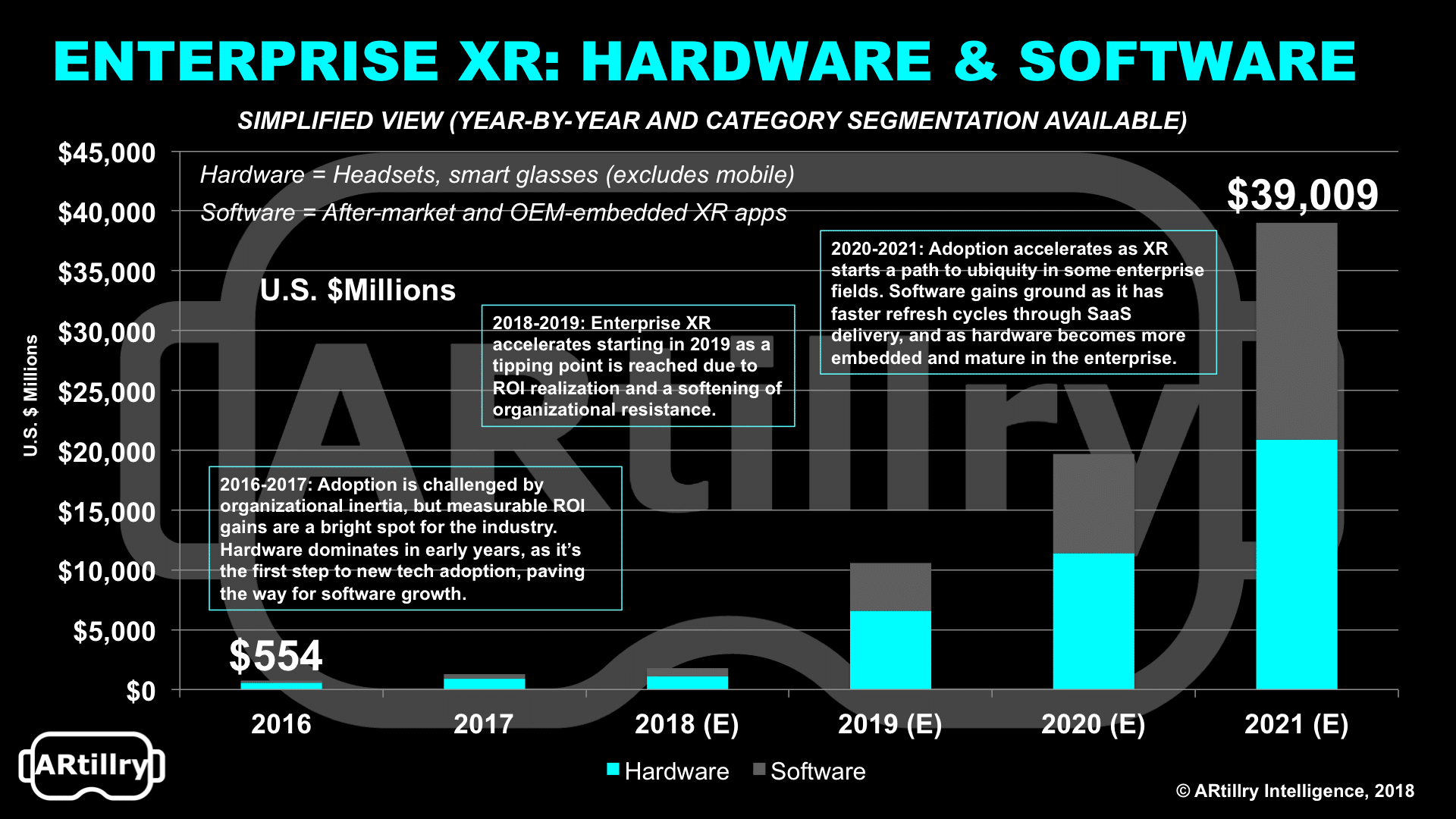
What are investors saying and doing around AR and VR? And what signals does that provide for opportunity spotting. This was the topic of a recent ARtillry Intelligence Briefing, unpacked further in the latest ARtillry Briefs episode (below).
The main takeaways include the fact that AR and VR have shown some weakness in the past year including slower than expected consumer adoption. But despite near-term softness, leading indicators for the sector’s long-term health could be seen in investor activity.
A few signals include $2.1 billion in VC funding in 2017 according to Crunchbase, not to mention the rise of XR focused firms like Presence Capital, the Venture Reality fund, Super Ventures, and corporate VC firms pursuing XR like Comcast Ventures, Qualcomm Ventures, and Intel capital.

Finding Near-Term Scale
So what are they doing and saying specifically? For one, we’ve seen interest in building block technologies. That includes things like, processing, compression, positioning, and the AR cloud — the thought being that best-of-breed software can scale by supporting an eventually large market.
And of course addressable market is a big factor, and is currently diminished by consumer VR’s installed base, So a lot of VC interest has shifted to areas of near-term scale including mobile AR and the enterprise. We just published a report on enterprise XR, and mobile is next.
Mobile AR’s benefits include its installed base — half a billion AR-compatible smartphones today, increasing to 4.3 billion by 2020 according to our projections. And business models beginning to take form include in app purchases, local commerce, and potentially some advertising.
In terms of product models, natural stickiness has been a positive attribute, including apps with recurring activity or customer lock-in, like social messaging. And technologies that sit further down the stack and support several apps can often scale better than front-end consumer apps.
On to enterprise, its advantage comes from a strong ROI case and bottom line impact. And we could begin to see a meaningful hardware installed base around 2019. That could pave the way for software, which carries the scalability and recurring revenue advantages of SaaS.
Desirable traits for enterprise plays include vertical or industrial-specific knowledge in the areas where XR is being sold… not just technical chops with XR. In other words, speak the language and know the culture and cadence of buying cycles — a current hurdle for enterprise XR.

Pitch Perfect
Beyond the product and revenue models, an important set of tactics comes down to the pitch. What do investors want to see? One common thing we heard was don’t cold call. The first test of an entrepreneur’s ability to sell and network is if he or she can network their way to the investor.
Second, keep it short. Focus on quantifiable metrics, such as addressable market, and your unit economics. Lose the cute metaphors like ape to man evolution slides. Lastly, investors like entrepreneurs that have a balance of confidence but also humility, which indicates coachability.
Those are a few takeaways and you can see the video below and check out the report it’s based on here. Stay tuned for lots more published material and multimedia as all of these XR trends continue to unfold. Meanwhile, past ARtillry Briefs episodes can be seen here.
For a deeper dive on AR & VR insights, see ARtillry’s new intelligence subscription, and sign up for the free ARtillry Weekly newsletter.
Disclosure: ARtillry has no financial stake in the companies mentioned in this post, nor received payment for its production. Disclosure and ethics policy can be seen here.
